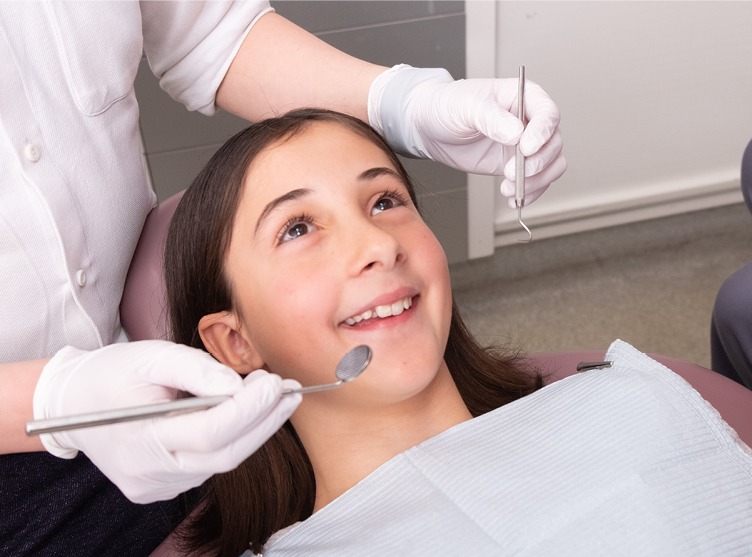Everything about Legacy Orthodontics
Everything about Legacy Orthodontics
Blog Article
The 6-Second Trick For Legacy Orthodontics
Table of ContentsLegacy Orthodontics for BeginnersNot known Facts About Legacy OrthodonticsThe Facts About Legacy Orthodontics UncoveredLegacy Orthodontics - The Facts3 Easy Facts About Legacy Orthodontics Shown
In addition, we provide adjustable treatment routines, flexible settlement alternatives and a fun, satisfying experience.An orthodontist is a dental practitioner trained to identify, protect against, and deal with teeth and jaw abnormalities. Orthodontists function with people of all ages, from kids to adults.
Malocclusion, or misaligned teeth, can result in dental issues, including dental caries, periodontal illness, and hard or painful chewing. Yet not every person is born with straight teeth. If you have a poor bite or large areas in between your teeth, you may want to speak with a dental practitioner focusing on orthodontic treatment.
The Only Guide for Legacy Orthodontics
( Image Debt: DigitalVision/Getty Images) Orthodontists utilize taken care of and detachable dental devices, like dental braces, retainers, and bands, to alter the position of teeth in your mouth. Orthodontic therapy is for oral abnormalities, including: Uneven teethBite problems, like an overbite or an underbiteCrowded teeth or teeth that are too much apartJaw misalignmentThe goal of orthodontic therapy is to enhance your bite.
A healthy and balanced bite guarantees you can consume, chew, and talk effectively. While you could think about orthodontists as primarily for youngsters or teenagers who require braces, they can fix dental issues at any type of age. Orthodontists participate in university, oral institution, and orthodontic college. After college graduation, they spend 2 or 3 years in an orthodontic residency program.
, however not all dental practitioners are orthodontists. They concentrate on 2 areas: Exactly how to appropriately and securely relocate teeth Just how to effectively lead growth in the teeth, jaw, and faceOnce an orthodontist has finished training, they have the alternative to become board licensed.
An Unbiased View of Legacy Orthodontics
Malocclusion leads to tooth congestion, an irregular jaw, or uneven bite patterns. Malocclusion is typically treated with: Your orthodontist attaches metal, ceramic, or plastic square bonds to your teeth.
If you have just small malocclusion, you may be able to utilize clear dental braces, called aligners, rather than typical dental braces (https://www.40billion.com/profile/383695065). Some individuals need a headgear to assist relocate teeth into line with pressure from outside the mouth. After dental braces or aligners, you'll require to use a retainer. A retainer is a customized gadget that keeps your teeth in place.
They're usually made use of on children. They can create added area in the mouth without needing to draw teeth. If you have a serious underbite or overbite, you might require orthognathic surgery (also called orthodontic surgical treatment) to extend or shorten your jaw. Orthodontists utilize cables, surgical screws, or plates to support your jaw bone.
You might need to see an orthodontist if you have: Crowding or not enough room for every one of your teethOverbite, when your upper teeth come by your bottom teethUnderbite, when your bottom teeth are too far forwardSpacing or concerns with gapsCrossbite, which is when your upper teeth fit behind your base teeth when your mouth is closedOpen bite or a vertical space between your front base and top teethMisplaced midline, when the facility of your base and top teeth don't align Correcting an oral malocclusion can: Make attacking, chewing, and talking easierImprove the proportion of our face and your general appearanceEase pain from temporomandibular joint conditionsSeparate your teeth and make them easier to clean up, aiding stop dental cavity or cavities It's typically a dental practitioner that first notices misaligned teeth during a routine test.
Facts About Legacy Orthodontics Uncovered

During your very first orthodontic examination, you'll likely have: An oral examPhotos taken of your face and smileDental X-raysPanoramic (360 level) X-rays of your face and headImpressions to develop molds of your teethThese tests will aid your orthodontist know just how to wage your treatment. braces. An orthodontist is a dental professional that's had training to treat your teeth and jaw
An orthodontist is concentrated on your bite, so something like a damaged tooth would be handled by a dental practitioner. Orthodontists are focused on your bite, or the means your teeth fit with each other, and the straightness of your teeth.
Ever before wondered just how celebrities constantly seem to have perfectly straightened teeth? Orthodontists are dental specialists that concentrate on fixing irregularities in the teeth and jaws.
How Legacy Orthodontics can Save You Time, Stress, and Money.

While dental braces are one of the most typically acknowledged orthodontic therapy, orthodontists have a varied toolkit at their disposal. The specific technique picked relies on the seriousness of the instance, the client's age, and specific choices. These tried-and-true dental braces use a system of brackets bound to the teeth and connected by cords.
Clear aligners, like Invisalign, are a prominent choice for clients seeking a more discreet therapy choice. These removable trays are customized to progressively shift the teeth's placement. Headwear might be utilized in conjunction with braces or aligners to use additional targeted forces, particularly for fixing jaw disparities. In cases of slim jaws, palatal expanders can be made use click this site of to develop room for proper tooth positioning.
Report this page